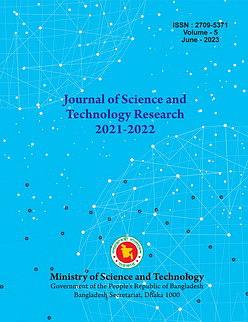An Assessment of the Causes and Consequences of Landslides (2017) Occurred in the Southeastern Areas of Bangladesh
DOI:
https://doi.org/10.3329/jscitr.v5i1.74011Keywords:
Landslide, chronology, consequences, landslide, slope, altitude, hazardAbstract
Over the past five decades, an examination of hazard and disaster events reveals that landslides have emerged as the predominant and devastating natural threat in the Chattogram Hill Tracts (CHT) regions of Bangladesh, often leading to loss of life and significant socioeconomic damage. The most catastrophic landslides in the area occurred in 2017, marking a pivotal event in its history. This study aims to analyze and elucidate the characteristics, causes, and impacts of the 2017 landslides in the Chattogram Hill Tracts districts (CHT) of Bangladesh. The analysis is based on comprehensive data examination, considering factors such as rainfall, altitude, slope, and geospatial field data. The research team has established a noteworthy correlation between landslides and factors such as heavy seasonal rainfall accompanied by thunderstorms, as well as altitude, slope, and slope aspects. Examining the period from 1968 to 2021, it was observed that numerous landslides occurred in the region, with sixteen being categorized as severe. The study aims to pinpoint the timing and causes of these landslides, highlighting the onset during the monsoon season from June to July. Results indicate that approximately 53% of landslide occurrences transpired within slopes ranging from 46 to 66 degree, and altitudes spanning from 60 to 109 meters in the study area. Furthermore, areas highly susceptible to landslides were identified, particularly those with significant human activity on hills, including built-up areas and jhum cultivation zones. The implications of this study are crucial for informing policymakers, hill authorities, and stakeholders, facilitating the implementation of precautionary measures within the hill community. By doing so, it is anticipated that the study's findings will contribute to the mitigation and reduction of landslide hazards in the CHT region.
J. of Sci. and Tech. Res. 5(1): 119-134, 2023
570
382
Downloads
Published
How to Cite
Issue
Section
License
Copyright (c) 2023 Sheikh Tawhidul Islam, Md Hiru Miah, Al Jubaer, Krishna Prosad Mondal, Md Munir Mahmud

This work is licensed under a Creative Commons Attribution 4.0 International License.




